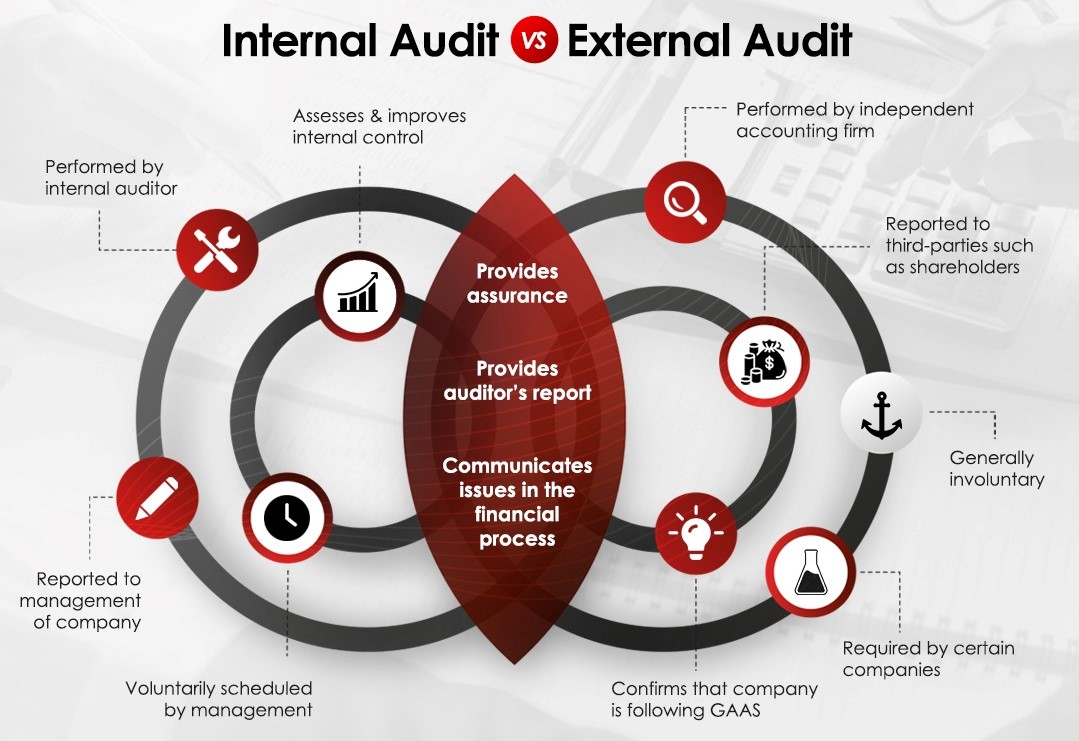Maintaining a healthy revenue cycle is non‑negotiable.
Even small billing errors can snowball into significant financial losses.
Whether you choose in‑house (internal) reviews or hire outside experts (external), audits are your first line of defense.
In this article, we’ll explore both approaches, compare costs and savings, and help you decide which model best protects your clinic’s bottom line.

What Are Internal Medical Audits?
Internal audits are conducted by your own staff or compliance team.
These reviews typically focus on:
-
Coding accuracy
-
Documentation quality
-
Claim submission processes
They use your existing systems and workflows, often without additional fees beyond staff time and training.
Pros of Internal Audits
-
Familiarity with workflows. Your team knows your EHR, billing software, and payer contracts.
-
Immediate feedback. Small issues can be flagged and fixed on the spot.
-
Culture building. Regular internal checks foster continuous improvement and ownership.
Cons of Internal Audits
-
Limited scope. In‑house teams may miss nuanced compliance pitfalls.
-
Potential bias. Familiarity can blind you to systemic issues.
-
Training burden. Keeping staff up to date on evolving CMS and payer rules requires ongoing investment.
What Are External Medical Audits?
External audits are performed by third‑party specialists.
These firms bring:
-
Deep knowledge of CMS, HIPAA, and private‑payer policies
-
Benchmarking data across multiple practices
-
Objectivity unencumbered by internal biases
Benefits of External Audits
-
Broader expertise. Specialists spot complex coding errors and compliance gaps.
-
Up‑to‑date knowledge. External teams track regulatory changes in real time.
-
Significant revenue recovery. Practices often recover 7–11% of underpayments through thorough external reviews rivethealth.com.
Drawbacks of External Audits
-
Upfront fees. Vendor costs range from $5,000 to $20,000 per audit, depending on practice size.
-
Scheduling delays. Peak claim seasons can push audit timelines out.
-
Integration effort. Implementing recommendations may require additional training or system upgrades.
Comparing Costs and Savings
To choose wisely, weigh the direct costs against the potential savings.
Direct Costs
-
Internal audits: Primarily staff hours and training materials.
-
External audits: Flat fees or per‑claim pricing, sometimes with retainer models
Deep Dives: Where External Audits Shine
Complex Compliance Issues
Regulations change constantly.
External auditors stay on top of:
-
Annual CPT and ICD‑10 updates
-
CMS policy revisions
-
Payer‑specific rule shifts
They catch nuances internal teams might overlook.
Benchmarking and Best Practices
Third‑party firms compare your performance to industry peers.
You see how your:
-
Clean‑claim rate stacks up
-
Days in A/R measure against benchmarks
-
Denial‑to‑appeal turnaround times compare
These insights drive strategic improvements beyond routine fixes.
Objective Analysis
An external perspective reduces confirmation bias.
Fresh eyes often spot hidden patterns in your data—like a modifier consistently misused or a payer with unusually high denial rates.
Building a Cost‑Benefit Scenario
Imagine a clinic with $3 million in annual billed charges.
-
Internal audit recovers 5% of lost revenue:
-
Recovery = $150,000
-
Staff cost for audit (equivalent salary/time) = $20,000
-
Net gain = $130,000
-
-
External audit recovers 10% of underpayments:
-
Recovery = $300,000
-
Audit fee = $25,000
-
Net gain = $275,000
-
Even after paying for outside expertise, external audits can more than double your net recovery.
The Hybrid Model: Best of Both Worlds
Many clinics adopt a mixed approach:
-
Monthly internal spot‑checks on high‑volume CPT codes.
-
Quarterly internal reviews of denial trends.
-
Annual external deep‑dives for compliance and benchmarking.
This layered strategy leverages internal familiarity while ensuring thorough, objective oversight.
According to a recent MGMA poll, 48% of practices audit payer payments monthly or quarterly, signaling the rise of hybrid models Medical Group Management Association.
Choosing the Right Audit Strategy
Reflect on your practice’s needs:
-
Staff capacity: Do you have trained coders and compliance experts on staff?
-
Risk tolerance: Are you under payer scrutiny or facing high denial rates?
-
Budget constraints: Can you allocate funds for external expertise?
-
Growth plans: Are you expanding services or locations?
If you lack bandwidth or face complex compliance demands, external audits often deliver superior savings.
If you have a robust RCM team, internal audits handle routine checks, reserving external reviews for deeper dives.
Getting Started: Your Audit Roadmap
-
Define scope. Choose to audit claims, denials, documentation, or all.
-
Set frequency. Monthly, quarterly, and annual schedules work best.
-
Select partners.
-
In‑house teams handle quick spot‑checks.
-
External firms bring specialized compliance and benchmarking expertise.
-
-
Act on findings. Prioritize high‑impact fixes—resubmit denied claims, update code sets, train staff.
-
Monitor metrics. Track clean‑claim rate, denial‑to‑appeal time, days in A/R to measure progress.
For expert guidance and a turnkey solution, explore our Medical Billing audit services designed to maximize your recovery and safeguard compliance.
Conclusion: Maximizing Savings with Strategic Audits
Choosing between internal and external audits comes down to your clinic’s capacity and goals. Internal reviews strengthen day‑to‑day accuracy, while external audits recover deeper underpayments and ensure compliance. A hybrid approach often delivers the best of both worlds—sealing revenue leaks and protecting your bottom line .Start auditing strategically today to maximize savings and secure your clinic’s financial health.
Comments on “Internal vs. External Medical Audits: Which Saves You More?”